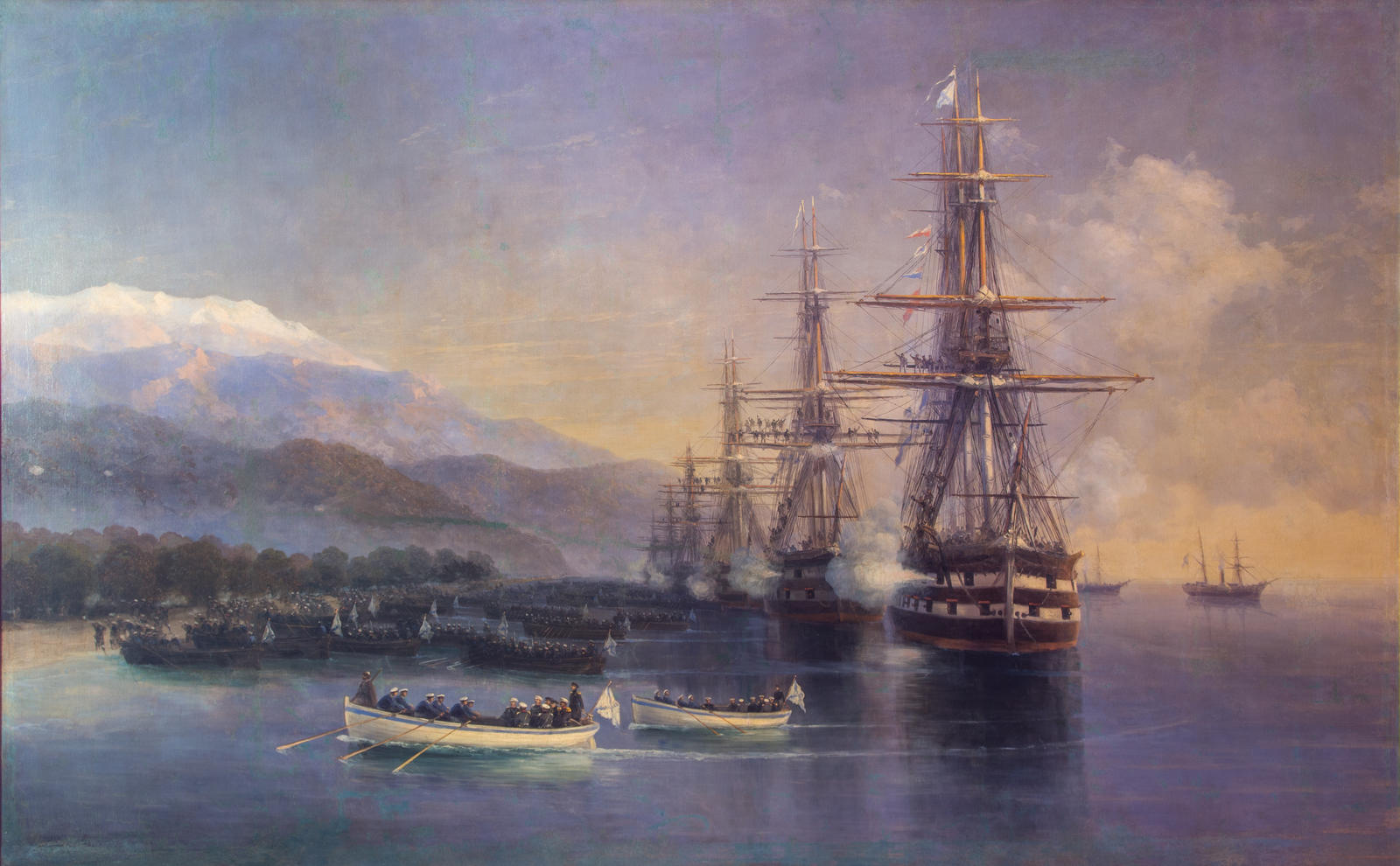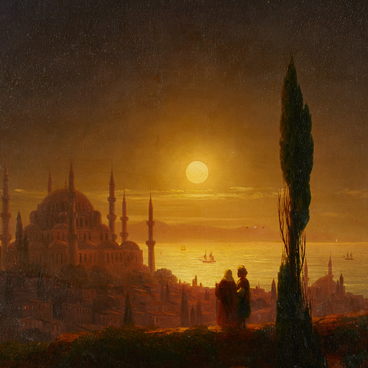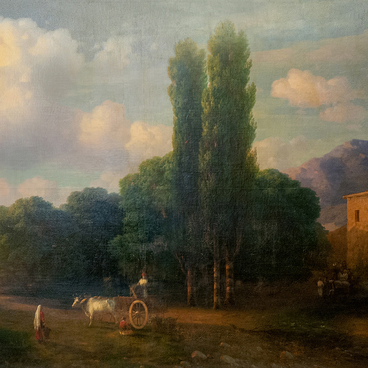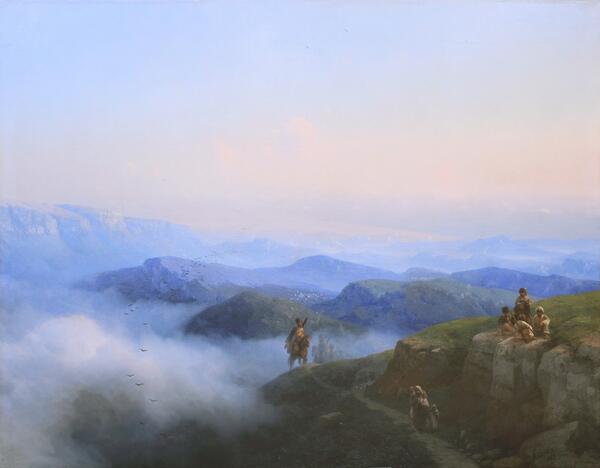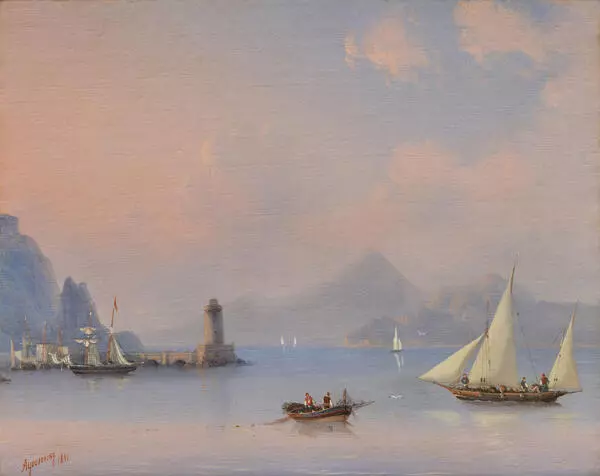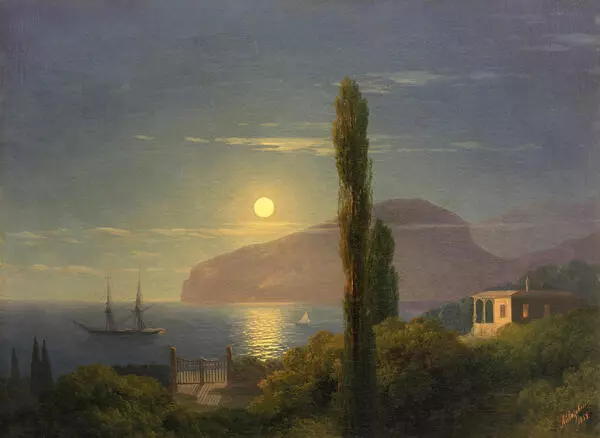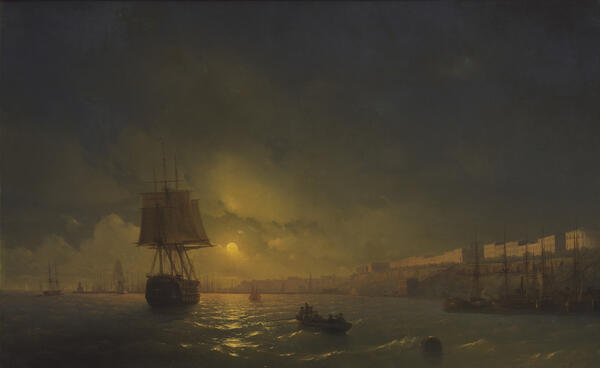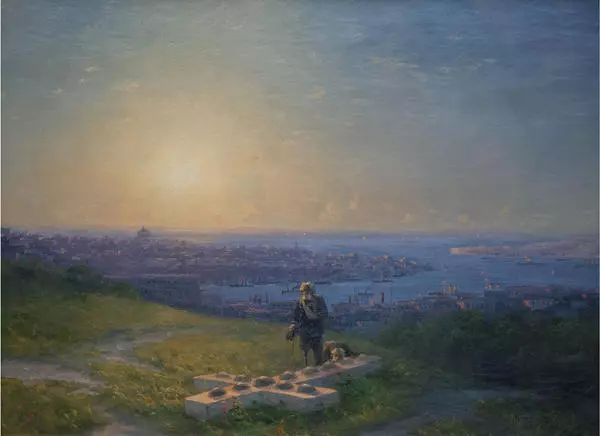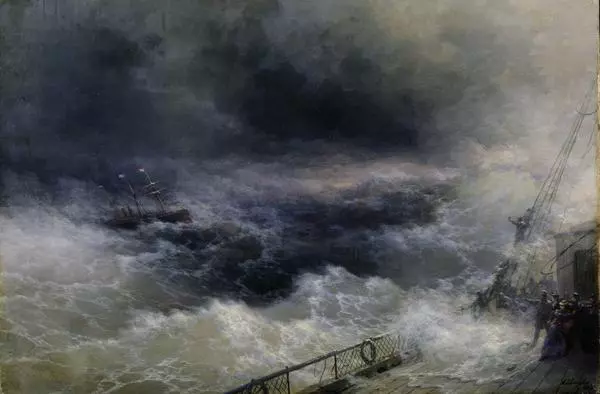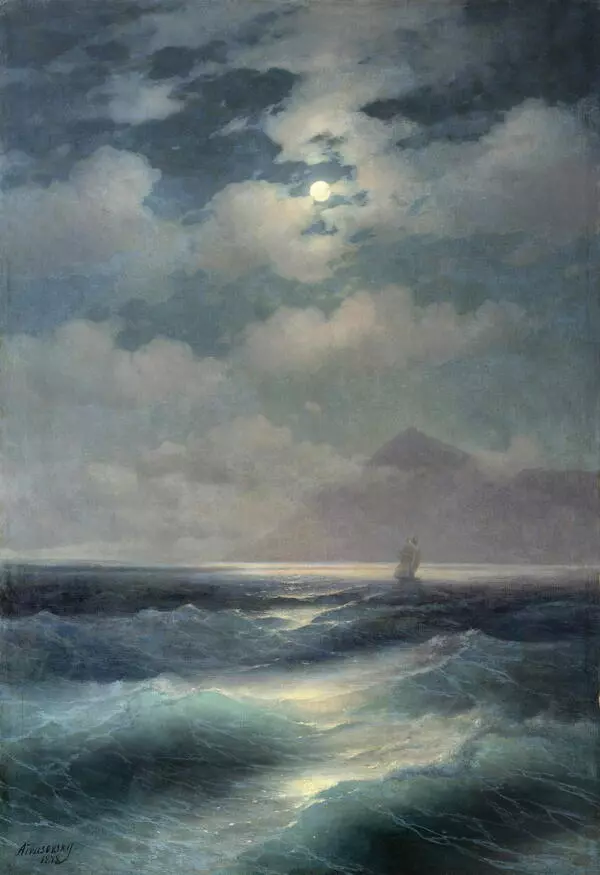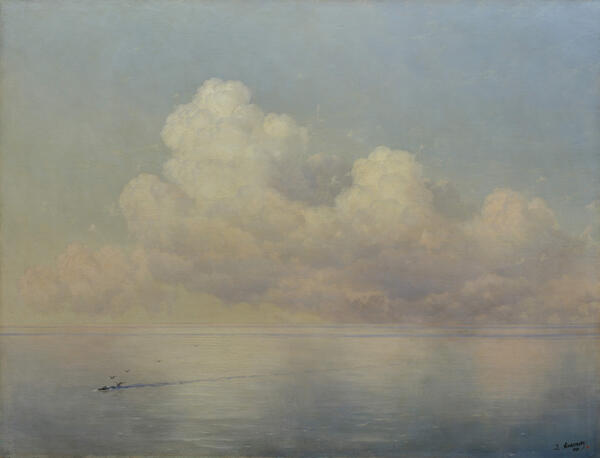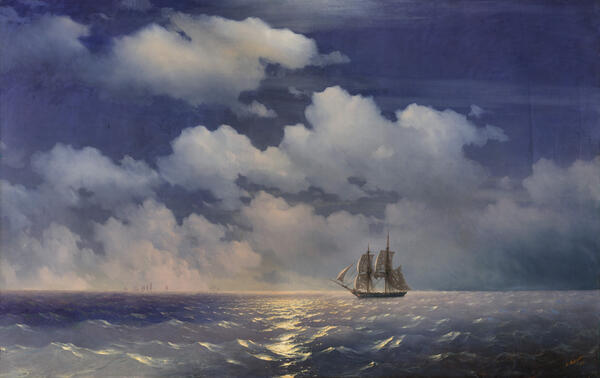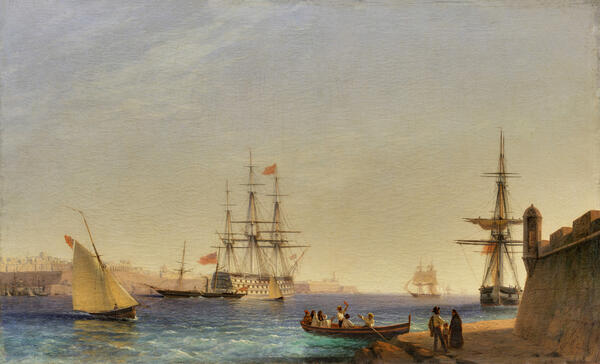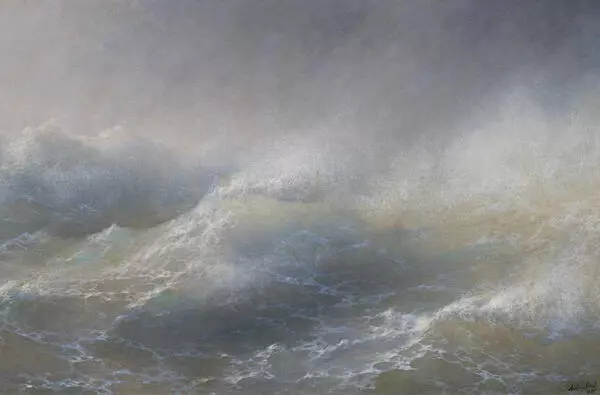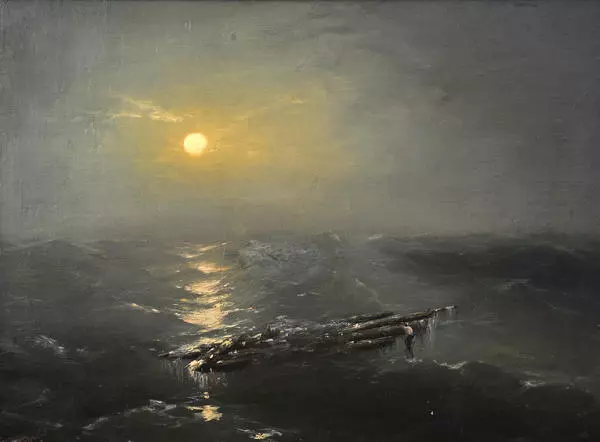In his art, Ivan Aivazovsky captured many heroic deeds of the Russian Navy. His whole life, the artist took a keen interest in this theme. It is not an exaggeration to say that he has covered practically all outstanding events, beginning with the Battle of Gangut under Peter the Great and finishing with sea battles occurring during his life. The talent of Aivazovsky as a battle painter was noted not only by his peers but also by the captains of the ships who he went sailing with.
When he was young, the artist happened to participate in several marine expeditions — the voyage of Baltic fleet ships in 1836, the marine operation of 1839 and the expedition of Black Sea fleet ships commanded by Admiral Litke (born von Lütke) in 1845 among them. The artist wrote: ‘As a Russian man in my heart, I rejoice in every victory of our troops on land and on sea and as an artist, it gives me an idea to depict it on canvas’.
In 1839, Aivazovsky got an invitation to participate as a painter in a landing operation on the Caucasus coast. Following that operation he painted a small battle canvas based on which he later painted The Landing at Subashi. Aivazovsky depicted Russian troops as they were landing under the coverage of cannon fire. In the foreground, we see boats approaching the shore. During that operation Aivazovsky made friends with Commander of the Black Sea fleet Lazarev. The figure of the fleet Commander can be discerned in the picture.
Aivazovsky is known to have attached a lot of importance to this work, so much so that he presented it for the judgment of the Arts Academy as his account of the trip to the Crimea. The artist turned to the theme of this military operation three times. He created the first picture right after his return to Feodosia, the second and the third — many years later, in the 1880s. It was common to him to depict such battles against the backdrop of wonderful nature which also conveyed the grandeur of the moment. In The Landing at Subashi, we see impressive masts of the ships looming large against the background of the mountain landscape. During that operation, Aivazovsky met many great Russian naval commanders who welcomed and supported the young painter.

